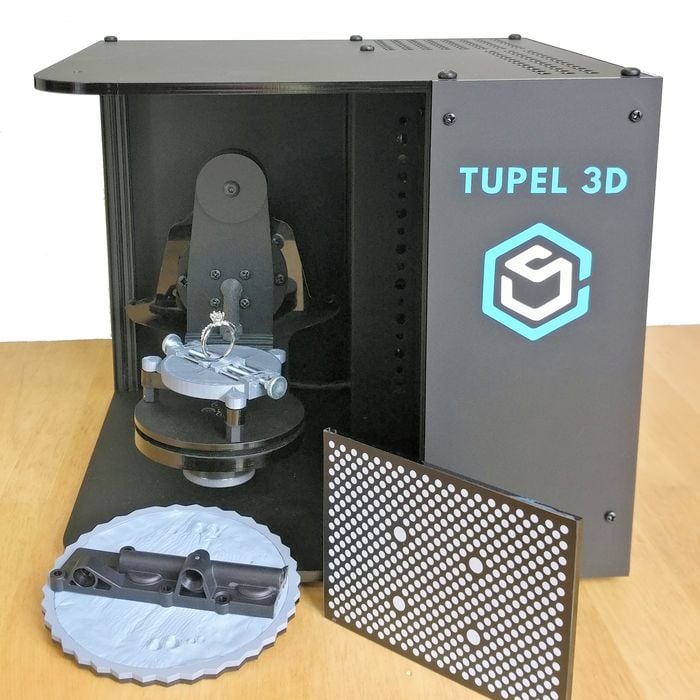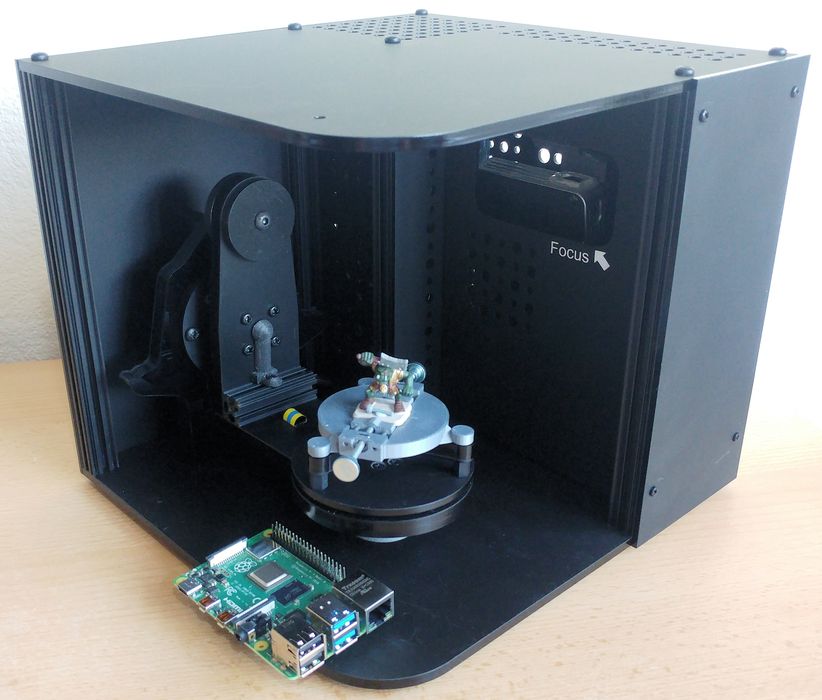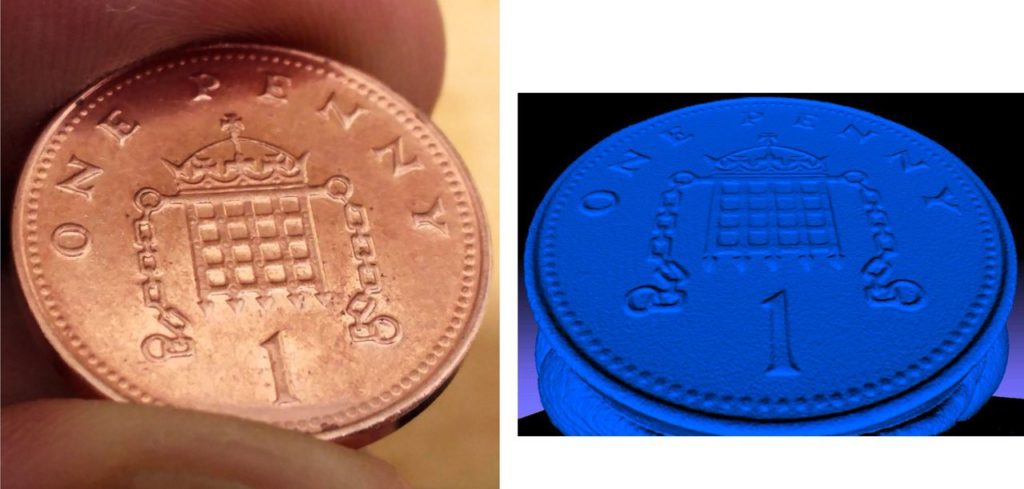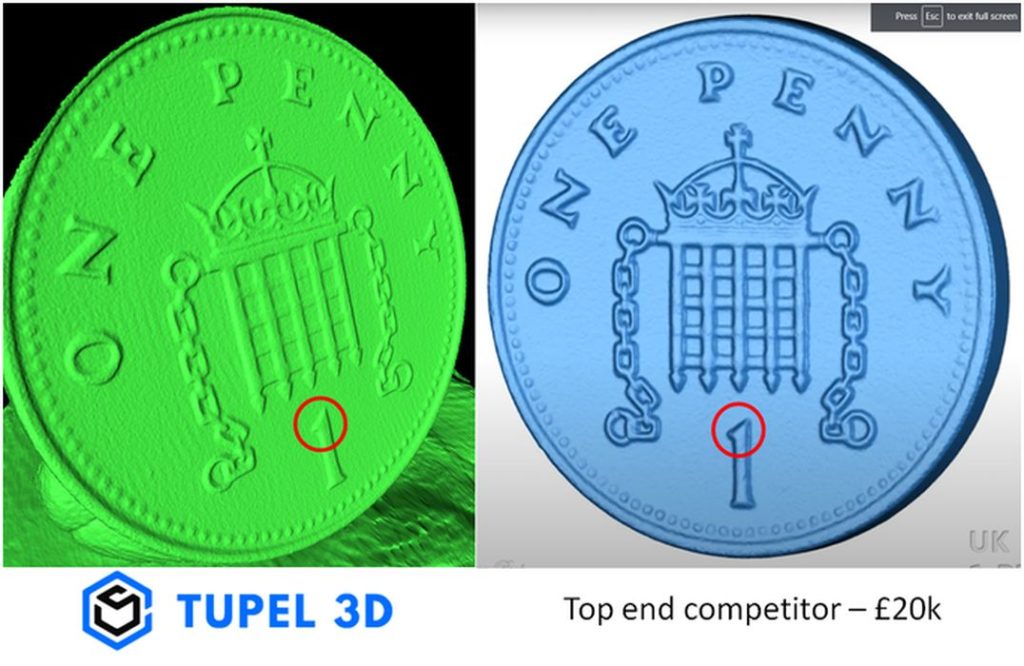
A new tabletop 3D scanner is about to provide outstanding scanning performance at a very low price.
JF Mather is the force behind the Tupel 3D scanner, and there’s a bit of a story behind its creation. Apparently Mather sought a dental 3D scanner, but found the current commercial options were extremely expensive. Like most devices we write about, Mather decided to build his own to see if he could match the performance with a lower priced system.
It seems he succeeded with the Tupel 3D scanner, which is set to launch soon on Kickstarter.
The device has a tabletop configuration and is capable of 3D scanning objects up to 120 mm diameter by 75 mm tall, or in “super resolution” up to 40 mm diameter by 40 mm tall.
These are small volumes to be sure, but the purpose of the device is to capture small objects in extraordinarily fine detail. Dental 3D scans, for example, must be quite smooth in order to be usable by patients.
Another use case might involve jewelry. Mather explains:
“For example, if you have a beautiful 1920s engagement ring from your great grandmother, a jeweller could scan that ring and make a custom wedding ring that pairs perfectly with it on your finger. It’s a popular trend and there are a lot of post lockdown weddings coming up.”
How does the Tupel 3D scanner work? It uses an advanced form of structured light.
3D Scanning With Phase Encoding

Typical structured light 3D scanners project an array of lines on a subject. Stereo optical sensors observe the projected lines and interpret their divergence from “square” in order to determine the geometry of the subject.
The Tupel 3D scanner does that too, but in a slightly different way: it uses phase encoding.
This is an advanced optical technique where pairs of sine waves with shifted phases are transmitted and the reflections are analyzed by the Tupel 3D scanner’s 8M cameras. By combining the results of the two sine waves, it’s possible to develop a more accurate result. This technique is used in medical MRI machines, but I’ve not heard of it being used in 3D scanners until now. You can learn more about phase encoding here.
The results are impressive. In “regular” mode, the Tupel 3D scanner can achieve 12 µm resolution (0.012mm), but in “super resolution” mode, it is an astonishing 4 µm (0.004mm).
To put that in perspective, that is one one-hundredth of the width of a typical 3D printer nozzle!
Here is a video showing the scanning resolution possible on the Tupel 3D scanner:
This pair of images show the resolution of a UK penny on the left and the corresponding 3D scan on the right. Notice the extreme detail obtained:

Mather provided a comparison image for scans of the same penny made with the Tupel 3D scanner on the left, and an unnamed £20K (US$27K) professional dental scanner on the right:

As you can see, the Tupel 3D scanner easily meets or perhaps exceeds the level of detail of the much more expensive dental device.
Now let’s talk about the price of the Tupel 3D scanner, which might be its most interesting feature: it’s to be sold at only £1250 (US$1700). That’s an incredible price breakthrough for such a powerful device.
As of today, the Tupel 3D scanner is now available on Kickstarter. If you’re in need of a high resolution tabletop 3D scanner, this might be a product to investigate.
Via Kickstarter
